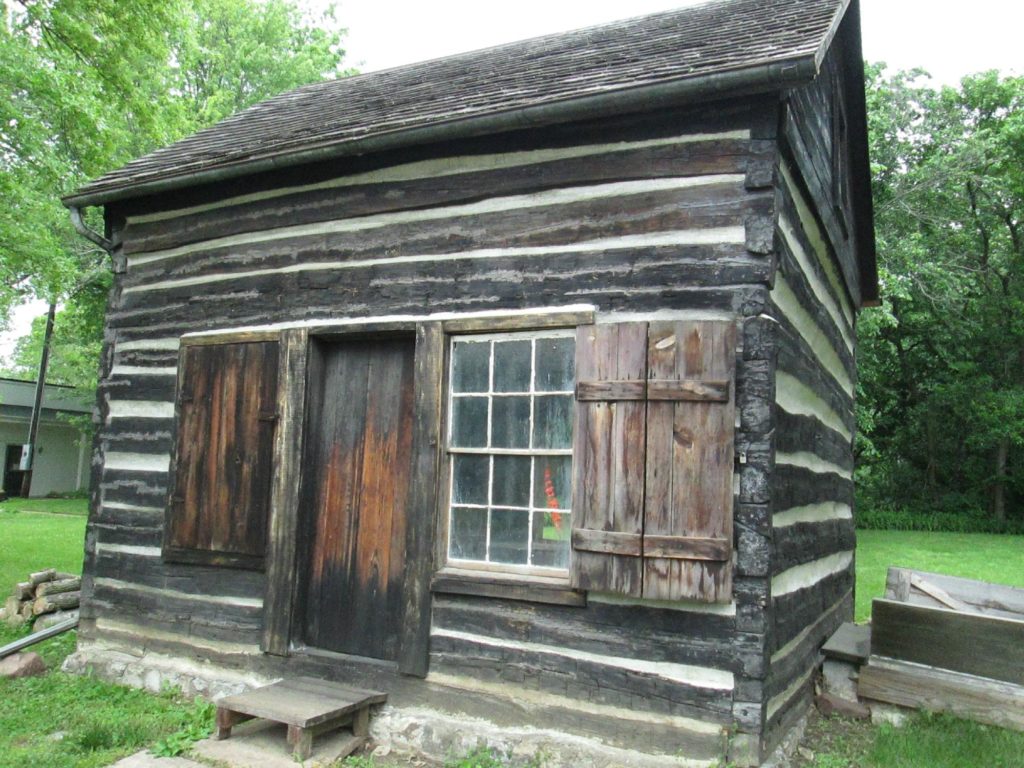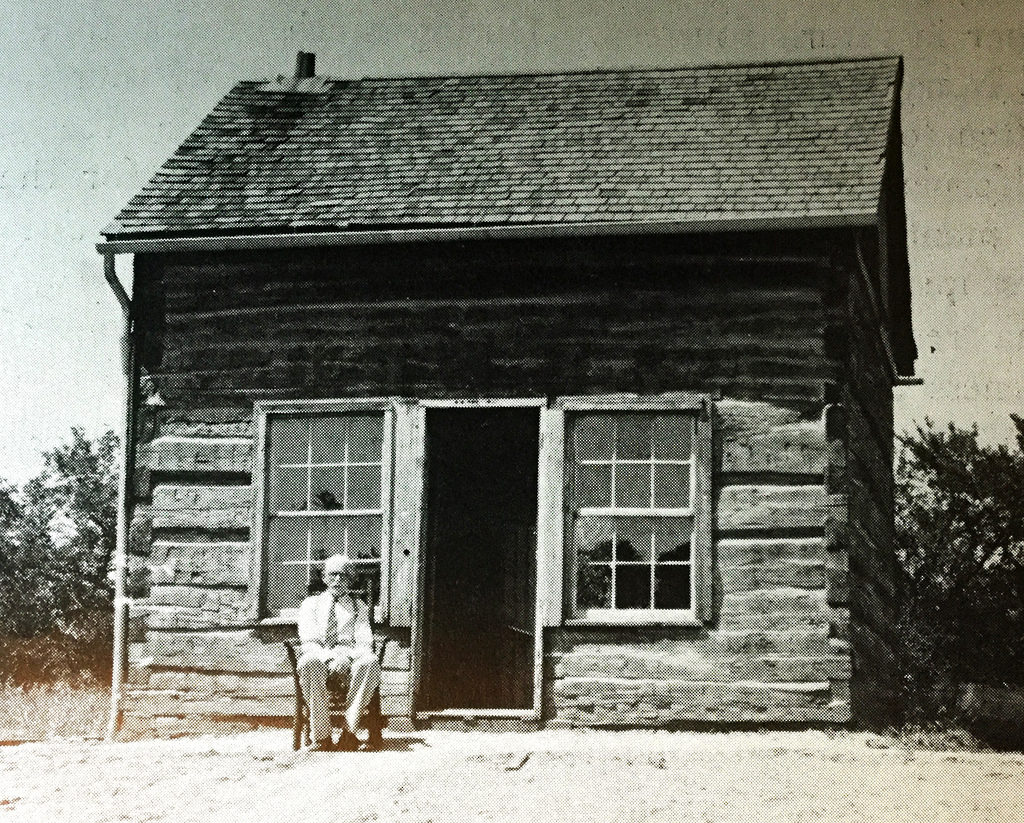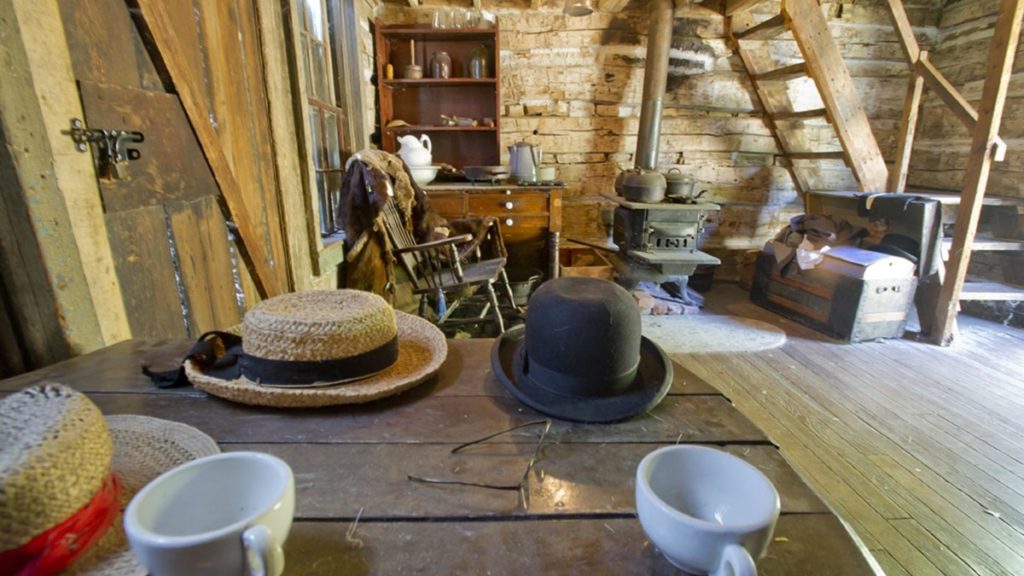
Allen and Barbara Mayhew migrated to the Nebraska City area from Trumbull County, Ohio, with their two sons in the spring of 1854. Allen Mayhew had made a claim on 160 acres of land just southwest of Old Fort Kearney (what would become Nebraska City) and built a cabin out of cottonwood logs on the northeast corner of his claim. The cabin was used as part of the Underground Railroad.
Nebraska City resident H.H. Bartling became the owner of the portion of the Mayhew’s property that included the cabin around 1896. As early as 1901, Bartling saw the potential of opening the cabin/cave site up to tourists. Bartling realized this because ever since the Mayhews moved from the property, the people who occupied the cabin were continually pestered by sightseers trespassing on the property wanting to get a glimpse of the famous cave. He likely felt that he could capitalize on that interest.
Many years later, in 1937, the Nebraska State Department of Roads began surveying for a new highway from Lincoln to Nebraska City. The original survey book laid out the center of this new highway within 15 feet of the Mayhew cabin that sat on land now owned by Bartling’s son, Edward Bartling.
Edward Bartling knew some of the history of the cabin and wanted to save and preserve the Mayhew’s cabin when it became threatened with destruction by the highway project. He proceeded to move the cabin back off the proposed roadway and removed the siding and additions that had been added to the cabin by various owners over the years. He dug a new cellar and lined the foundation walls with the original foundation stones. He then rolled the cabin to the north and placed it on the new foundation and the cabin remains in that location today.

Also seeing attraction possibilities for this well-known site, Edward Bartling opened the cabin site up in 1938 as a tourist location and proceeded to recreate the famous cave with which it had been associated. Bartling began researching the lives of John Kagi and the Mayhew’s and published a book of his findings. The first edition of his book came out in 1938. However, there are a few inaccuracies in the book due to the research limitations of the time.
In 1959, the cabin, cave and park property was purchased from the Bartling estate by the George Rowe family. The site was operated as a tourist attraction and the site grew continually as Mr. Rowe added exhibits with antiques and artifacts associated with general history and the agricultural history of the area. That was the “John Brown’s Cave” that most Nebraskans and tourists remember. When the Rowe family operated John Brown’s Cave, the now museum building served as their gift shop and visitor center.
Larry Shepard purchased the site from the Rowe family in 1991 and operated the site until 2001. At that time, he donated the cabin and grounds to the newly formed Mayhew Cabin Foundation.
In 2003, the Mayhew Cabin with John Brown’s Cave Museum was the first site in Nebraska to be recognized by the National Park Services’ Network to Freedom.
When the Mayhew Cabin Foundation was formed, the cabin had deteriorated significantly. In June of 2005, thanks to contributions from the National Park Service and the Nelson Family Foundation, the process of saving the cabin began. The roof was re-shingled and the interior and exterior of the structure were restored. The restorer, Butch “Mr. Keelboat” Bovier, marked much of the wood used to restore the cabin so that future generations would know what work was original and what work was for restorative purposes. Butch is a master craftsman, and you can see more of his work by visiting the Lewis & Clark Center in Nebraska City.
Today, you can walk through the furnished cabin to see how the Mayhew’s lived and then travel down to the cellar and walk through the tunnel to better understand what the remarkable flight from slavery would have entailed.

